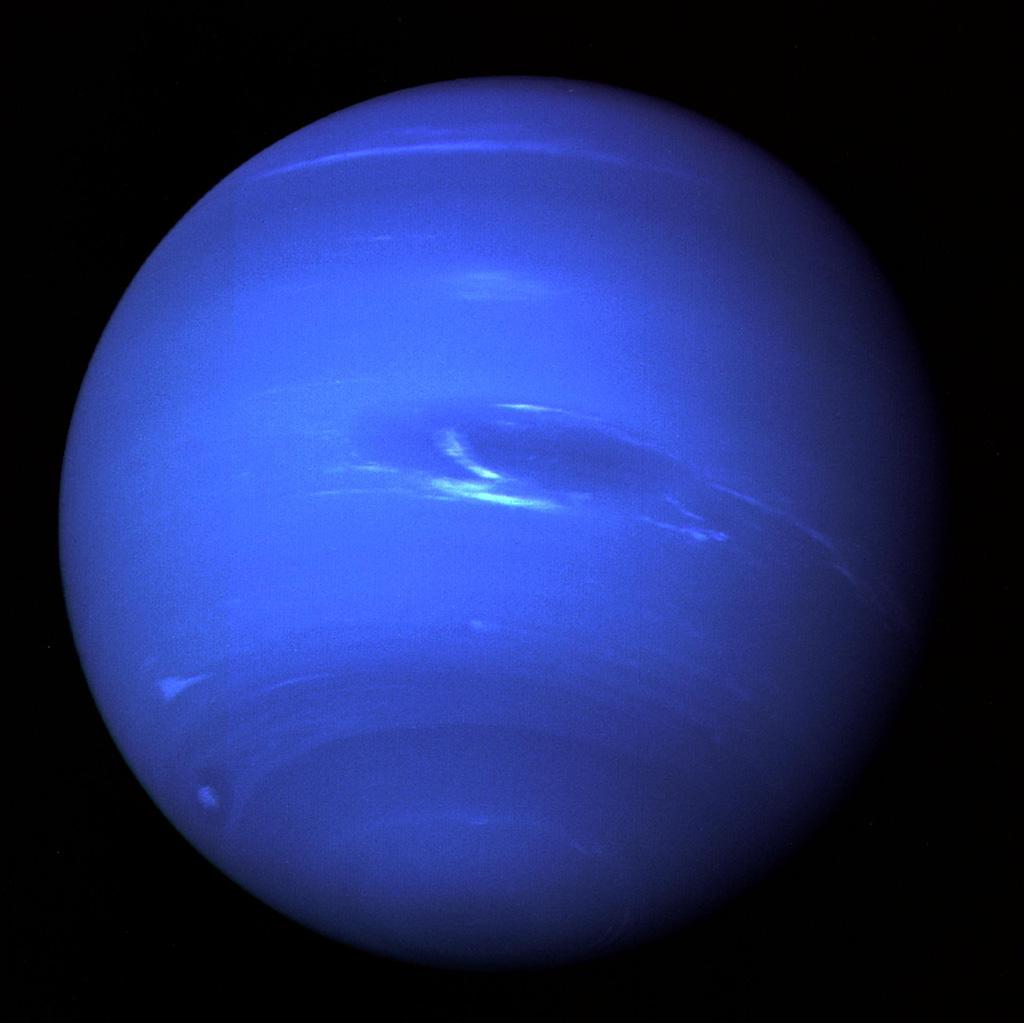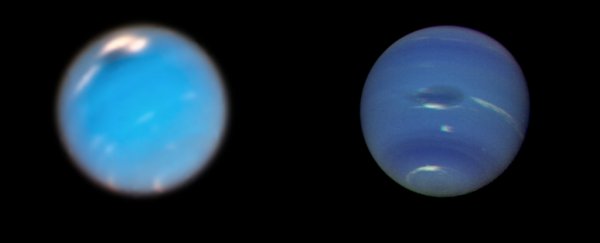For the very first time, the Hubble Space Telescope has captured the formation of a giant storm - or a Great Dark Spot - on the icy surface of Neptune.
It's the fourth vortex that Hubble has captured on this frigid planet since 1993, and the very first that scientists have been able to chronicle over several years.
Discovered in September 2018, Neptune's newest dark spot is roughly 11,000 kilometres across (6,800 miles), but when it first started to grow, several years previous, it only looked like a gathering of spotted white clouds.
 (NASA/ESA/GSFC/JPL)These so-called companion clouds are made up of methane ice crystals, and scientists suspect they accompany the storms that form dark spots, hovering above them like clouds shrouding a mountain.
(NASA/ESA/GSFC/JPL)These so-called companion clouds are made up of methane ice crystals, and scientists suspect they accompany the storms that form dark spots, hovering above them like clouds shrouding a mountain.
"We were so busy tracking this smaller storm from 2015, that we weren't necessarily expecting to see another big one so soon," says planetary scientist Amy Simon from NASA's Goddard Space Flight Center.
As the farthest planet from the Sun, Neptune is the only one in our Solar System not visible to the naked eye, and this means there's still a lot that we don't know about its dark, cold supersonic winds. Thanks to Hubble, however, we are now starting to unravel some of Neptune's greatest secrets.
If these storms really do take several years to form, then this means they probably originate much deeper in Neptune's atmosphere, becoming visible only when the top of the storm rises above the companion clouds.
"It was certainly a surprise," Simon added. "We were used to looking at Jupiter's Great Red Spot, which presumably had been there for more than 100 years."
Yet unlike Jupiter, Neptune's storms are ephemeral, disappearing from the surface after approximately two to six years and reappearing every four to six years.
As such, these transitory storms give scientists an unparalleled opportunity to not only figure out how these vortices are formed, but also how they die.
This study has been published in Geophysical Research Letters.
